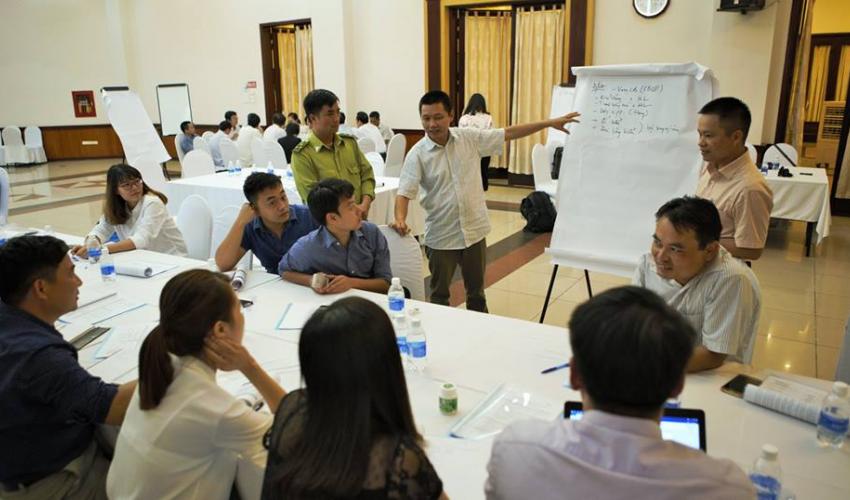“What species exist in this site?” is a question that is often asked by visitors to Vietnam’s protected areas. It seems to be a simple question to answer given the amount of research that’s been carried out in Vietnam’s national parks and nature reserves. But as MONRE’s Nguyen Xuan Dung pointed out, much of this research was done 10-20 years ago, often rapidly as part of project preparation, and usually covering a limited number of taxa. And even when biodiversity data and information exist, they are rarely shared between government agencies.
 In response, and as part of the USAID-funded Ha Long-Cat Ba Alliance, IUCN organized a workshop in Hanoi on August 9-10, 2018 on biodiversity monitoring in Ha Long Bay and Cat Ba Archipelago. The objective was to get comments on a biodiversity monitoring framework developed by Dr. Luu Hong Truong, a botanist and Director of the Southern Institute for Ecology, and Dr. Le Khac Quyet, a primate specialist, who carried out a scoping visit in May.
In response, and as part of the USAID-funded Ha Long-Cat Ba Alliance, IUCN organized a workshop in Hanoi on August 9-10, 2018 on biodiversity monitoring in Ha Long Bay and Cat Ba Archipelago. The objective was to get comments on a biodiversity monitoring framework developed by Dr. Luu Hong Truong, a botanist and Director of the Southern Institute for Ecology, and Dr. Le Khac Quyet, a primate specialist, who carried out a scoping visit in May.
Representatives from the management boards of Ha Long and Cat Ba, Cat Ba National Park, MONRE, MARD’s Fishery Resource Protection Department, and provincial government agencies, as well as forest rangers and local experts were invited to provide feedback.
Participants discussed the differences between biodiversity monitoring and biodiversity inventory. The former is done regularly while the latter is done occasionally, as explained by IUCN’s Nguyen Duc Tu. In addition to three important ecosystems that Drs. Truong and Quyet proposed, i.e., limestone forests, coastal and terrestrial wetlands, and marine ecosystems, participants recommended adding cave ecosystem as they are particularly well represented in Ha Long and Cat Ba (and are complicated to survey).
A first step in designing a monitoring system is to create a database of species native to the sites. Dr. Truong introduced a free software named BRAHMS, Botanical Research and Herbarium Management System, developed by Oxford University that can be used to record and organize species data. MONRE’s Dr. Nguyen Xuan Dung told participants about the establishment of a National Biodiversity Database System (NBDS) that once completed could be used to analyze the status of biodiversity nationwide and serve as a platform to data exchange between government agencies, protected areas, research institutes and other parties.
To fully implement the proposed biodiversity monitoring program will require a lot of time and effort. But the most important factor is raising awareness of protected area managers about the importance of biodiversity monitoring and it can help site management. In fact, both management boards have strategies to mobilize more funding and political support for this task. It will be a step by step process in the words of Dr. Nguyen Tien Hiep, a botanist with many years’ experience in Ha Long and Cat Ba.
After the workshop, the two management boards will prepare a detailed plan for their biodiversity monitoring programs. Through the Alliance, IUCN will continue to provide technical and financial support for this important work.